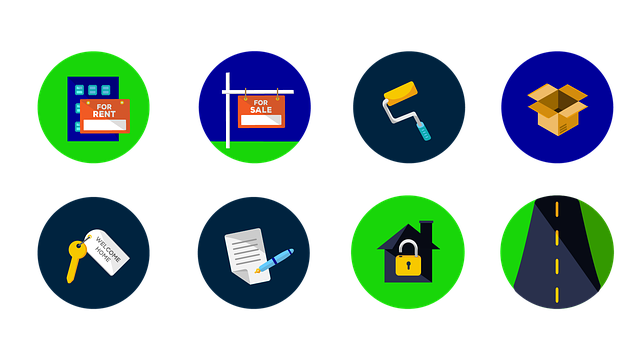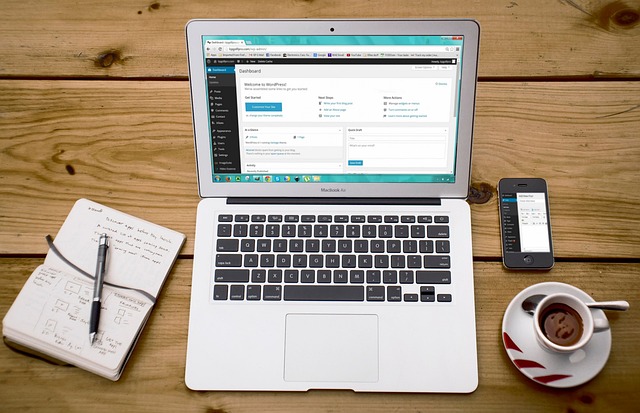Small businesses need engaging, user-friendly websites that drive conversions without breaking the bank. Tailored solutions offer e-commerce functionality and content management systems, enabling easy updates without coding knowledge. A successful site is mobile responsive, SEO-optimized, and communicates the brand story effectively. Platforms like WordPress, Wix, and Squarespace provide accessible, cost-effective options with diverse features for a strong online identity. Outsourcing to professionals ensures specialized skills and long-term efficiency as the business grows. Regular content updates, SEO best practices, and clear navigation are crucial for optimal performance and tracking KPIs for success.
In today’s digital landscape, a strong online presence is crucial for small businesses (SMEs) to thrive. A well-designed website serves as a vital tool, enhancing visibility, building credibility, and driving sales. This article guides you through the essentials of affordable small business web design. From understanding unique SME needs to choosing the right platforms and essential features, we’ll explore strategies to create impactful online destinations. Learn how to measure success with key performance indicators, ensuring your website achieves its full potential in this competitive market.
Understanding Small Business Web Design Needs

Small business web design is more than just creating an online presence; it’s about crafting a digital storefront that attracts customers, showcases products or services effectively, and fosters engagement. These businesses often have unique needs, ranging from e-commerce functionality to content management systems that allow them to easily update their websites without coding knowledge.
Understanding these specific requirements is key to developing affordable solutions. A well-designed small business website should be user-friendly, mobile responsive, and optimized for search engines (SEO) to enhance online visibility. It needs to effectively communicate the brand’s story, values, and offerings while providing a seamless user experience that encourages conversions. By addressing these aspects, small businesses can thrive in the digital landscape without breaking the bank.
The Benefits of a Professional Website for SMEs

For Small and Medium Enterprises (SMEs), a professional website is no longer a luxury but an indispensable tool for success in today’s digital landscape. In a world where consumers often turn to the internet for goods, services, and information, having a well-designed, user-friendly online presence can significantly boost a business’s visibility, credibility, and ultimately, its bottom line. A Small Business Web Design solution tailored to your needs ensures your brand story is told effectively, attracting and engaging potential customers.
A professionally designed website enhances customer experience by providing easy navigation, quick loading times, and mobile responsiveness, ensuring that visitors have a seamless interaction with your business. Moreover, it serves as a powerful marketing channel, allowing SMEs to showcase products or services, share valuable content, and establish a strong online identity. This digital storefront can drive traffic, generate leads, and even foster customer loyalty, all while remaining an economical investment for any small business owner.
Unlocking Affordable Web Design Options

In today’s digital landscape, a strong online presence is crucial for small businesses to thrive and reach their target audience. Fortunately, unlocking affordable small business web design solutions has never been easier. With numerous cost-effective options available, entrepreneurs can now create professional websites without breaking the bank. Many web design platforms offer user-friendly interfaces and customizable templates, allowing businesses to build their own sites with minimal technical expertise.
These platforms provide a wide range of features, from responsive designs that adapt to various devices to e-commerce functionalities for online sales. Additionally, freelance web designers and agencies often offer competitive rates, making high-quality small business web design accessible and affordable. By leveraging these resources, small businesses can establish an impressive online presence, enhance their brand visibility, and compete effectively in the digital marketplace.
Do-It-Yourself vs Outsourcing: Weighing the Pros and Cons

Small businesses have a crucial decision to make when it comes to their website – whether to create and manage it in-house (Do-It-Yourself) or outsource it to professionals. Both options have their advantages and disadvantages when considering small business web design. DIY approaches empower businesses to have complete control over the creative process, allowing them to build a site that perfectly aligns with their brand identity. This method can also be more cost-effective in the short term, as there are no external design agencies or freelancers involved. However, for those without web development expertise, creating and maintaining an engaging, user-friendly website can be time-consuming and may not yield optimal results.
On the other hand, outsourcing small business web design to experts offers a range of benefits. Professional designers bring specialized skills and experience, ensuring your site is aesthetically pleasing, responsive, and optimized for search engines. They can also provide ongoing support and maintenance, leaving you free to focus on core business activities. While initial costs may be higher, this option often proves more efficient in the long run, especially as your business grows and your web presence becomes a critical component of your marketing strategy.
Top Platform Choices for Small Businesses

When it comes to choosing a platform for your small business web design, there are several popular options that offer cost-effective solutions without compromising quality. WordPress remains a top choice due to its flexibility and vast library of themes and plugins, catering to various industries and budgets. Its user-friendly interface makes it accessible even for those without coding experience, allowing for easy content updates and management.
Additionally, platforms like Wix and Squarespace have gained significant traction for their drag-and-drop website builders, providing a seamless and intuitive design process. These all-in-one solutions include hosting, domain registration, and e-commerce features, making them attractive for startups and small businesses looking for a quick and affordable launchpad to the digital world.
Essential Features for a Successful Small Business Website

A successful small business website is more than just an online presence; it’s a powerful marketing tool that can drive growth and sales. When crafting or revamping your site, focus on essential features that cater to both your customers’ needs and search engine optimization (SEO) best practices. Firstly, ensure mobile responsiveness as most users access websites via their smartphones. A user-friendly interface, fast loading times, and clear navigation are also crucial for a positive user experience.
Integrate regular updates with fresh content, including blog posts or news updates, to engage visitors and boost SEO rankings. Optimize your website’s structure by using relevant keywords, meta descriptions, and alt tags. Include a call-to-action (CTA) that encourages users to take the desired action—whether it’s making a purchase, subscribing to a newsletter, or contacting you for more information. Finally, ensure security through HTTPS encryption to protect customer data and build trust.
Measuring Success: Key Performance Indicators for Your Site

Measuring success is an integral part of any small business web design strategy, as it allows for understanding what’s working and where there’s room for improvement. Key Performance Indicators (KPIs) provide a clear view into user engagement and conversion rates, two critical aspects that drive online success. For a small business website, tracking metrics like bounce rate, time on site, and conversion rates can offer valuable insights. A low bounce rate indicates that visitors are finding what they’re looking for, while a higher time on site suggests your content is engaging. Conversion rates, whether it’s a sale or a sign-up form submission, are a direct measure of how well your website is achieving its intended goals.
By regularly monitoring these KPIs, small business owners can make data-driven decisions to optimize their sites. This could involve refining content strategies, improving site navigation, or enhancing visual elements. Such continuous evaluation ensures that the web design remains relevant and effective, aligning with the evolving needs of both the business and its target audience.
